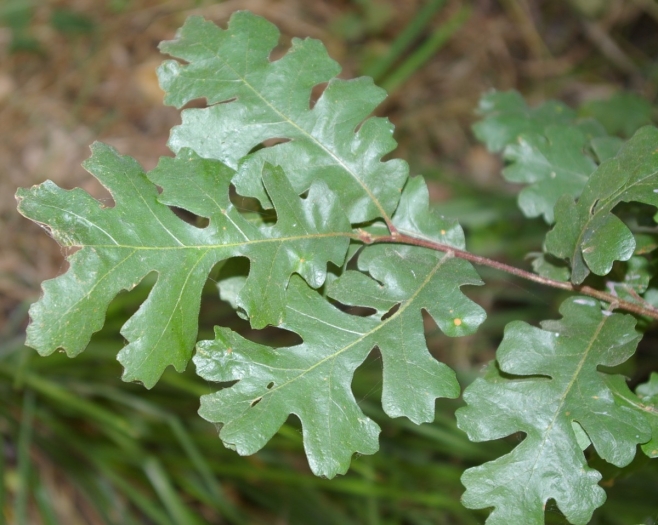Valley Oak
(Quercus lobata)
Valley Oak (Quercus lobata)
/
/

Public domain
Public domain











































































Estimated Native Range
Summary
The Valley Oak is valued for its majestic stature, longevity, and habitat value for wildlife. It is used in large landscapes, such as parks and naturalized areas, and is also an important species for restoration projects. It requires access to groundwater and is adapted to the Mediterranean climate of its native range, with hot, dry summers and cool, wet winters. It thrives in full sun and prefers soils with medium to fast drainage. While it is drought-tolerant once established, young trees benefit from supplemental watering during dry periods. Potential problems include oak root fungus and sudden oak death, which can be mitigated with proper care and monitoring.CC BY-SA 4.0
Plant Description
- Plant Type: Tree
- Height: 45-70 feet
- Width: 30-50 feet
- Growth Rate: Moderate
- Flower Color: N/A
- Flowering Season: Spring
- Leaf Retention: Deciduous
Growth Requirements
- Sun: Full Sun
- Water: Medium
- Drainage: Medium, Fast
Common Uses
Bee Garden, Bird Garden, Butterfly Garden, Deer Resistant, Drought Tolerant, Edible*Disclaimer: Easyscape's listed plant edibility is for informational use. Always verify the safety and proper identification of any plant before consumption., Erosion Control, Fire Resistant, Rabbit Resistant
Natural Habitat
native to the interior valleys and foothills of California, ranging from Siskiyou County to Los Angeles County
Other Names
Common Names: California White Oak, Overcup Oak, Roble
Scientific Names: , Quercus lobata, Quercus hindsii, Quercus lobata var. turbinata, Quercus longiglanda, Quercus hindsiana, Quercus lobata f. argillora, Quercus lobata f. insperata, Quercus lobata subsp. turbinata, Quercus lobata subsp. walteri
GBIF Accepted Name: Quercus lobata Née